35 Fabric Ties
Sheri Deaton
Fabric Ties
Fabric ties are made out of fabric and can be used to add an attractive detail to almost any project. Many individuals choose to use fabric ties when making straps for aprons or spaghetti straps for shirts.
In the spring of 2020, many individuals used fabric ties to create homemade face masks. This author remembers the shortage of elastic products and their limited availability in this region of the country. The lack of supplies coupled with the increased need for masks created the perfect opportunity for fashionistas to break out their abilities in making fabric ties (Deaton, 2021).
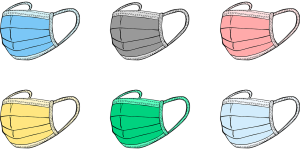
Fabric ties can be wide or narrow–the applications are endless! Common applications include the enhancement of blouses, cushions, drapes, duvet covers, pillows, Roman shades, and skirts. Some ties are functional, while others are purely decorative. Regardless of the function, fabric ties add an extra dimension of pop and polish to any project.

Wonderfully Wide Fabric Ties
As you have probably read multiple times, the most important thing you can do when creating a garment is to read and follow the directions. The following guidelines can help you create your first set of fabric ties. Use this technique if the completed fabric tie is going to be 2” wide or greater.
- Fold your piece of fabric hot dog style and iron it flat with the right sides facing each other.
- Sew a straight seam along the length of the fabric, using a ½” seam allowance. Backtack at the beginning and end of the seam leaving the ends open.
- Start from one end of the tie and begin to roll the edges back until you have flipped the fabric inside out. Consider using a safety pin or turner to assist you with this process.
- Press the fabric flat, with the seam being one side of the tie and the fabric on the other.
- At each end of the tie, fold the fabric in ½” to hide the raw edges.
- Press each end, ensuring the fabric is turned under in equal amounts to create a straight seam.
- Sew each end up ⅛” from the edge, or presser foot distance.
- Iron the fabric tie flat. Starch if needed; attach to garment or project.

Narrow Nancy Fabric Ties
Use this technique for narrow ties that cannot be easily turned due to their width.
- Fold the piece of fabric hot dog style and iron it flat with the wrong sides facing each other. *You should see the right sides of the fabric if this is folded correctly.
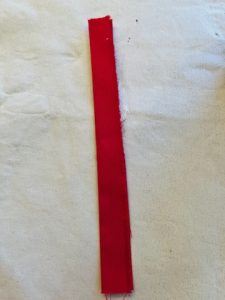
- Open up the pressed fabric. Turn one side of the fabric down toward the inside crease. The raw edge of the fabric should be flush with the crease in the middle of the fabric. Press carefully.
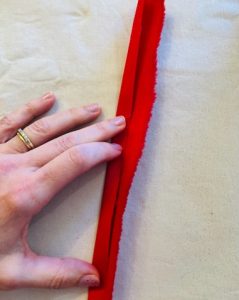
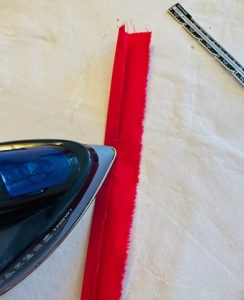
- Repeat this process with the other side of the fabric. You should now have all raw edges hidden toward the center of the narrow tie.
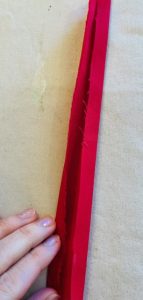
- Press the tie together once more, hiding all raw edges and creating a narrow tie.
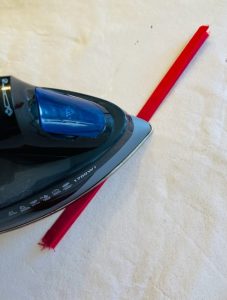
- Sew a straight seam along the length of the fabric, presser foot’s distance from the edge. Backtack at the beginning and end of the seam leaving the ends open.
- At each end of the tie, fold the fabric in ½” to hide the raw edges.
- Press each end, ensuring the fabric is turned under in equal amounts to create a straight seam.
- Sew each end up ⅛” from the edge, or presser foot distance.
- Iron the fabric tie flat. Starch if needed; attach to garment or project.
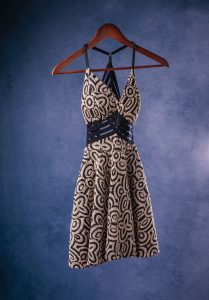
Hemming it Up
Fabric ties are used in a variety of home furnishings and apparel productions. Knowing how to create these will not only enhance your abilities but will also open up new possibilities for the application and implementation of ties in future projects.
Try both techniques presented in the text and use the resources located at the end of the chapter to assist you in furthering your understanding of how to implement and apply these skills. When you get frustrated with turning the ties, take a deep breath and remember that patience is a virtue. You’ve got this!

Resources
References
Deaton, S. (2021). Teaching Apparel Production. Presentation.






